
Exploring the Vibrant Heart of Slave Island, Colombo
Discover Slave Island in Colombo: A vibrant blend of history, culture, and modernity, offering diverse culinary delights, rich heritage, and lively nightlife.
Slave Island, known locally as 'Kompanna Veediya,' is a melting pot of cultures, history, and modernity located in the bustling city of Colombo, Sri Lanka. This neighborhood is a fascinating blend of the old and the new, where colonial-era buildings stand side by side with contemporary skyscrapers, offering a unique experience for any visitor. One of the most intriguing aspects of Slave Island is its rich history. The area got its name during the colonial period when it was used to house slaves brought from Africa and other parts of Asia. Today, it is a vibrant community where you can find a mixture of Tamil, Sinhalese, Malay, and Burgher communities living in harmony. This cultural diversity is reflected in the neighborhood's religious sites, with Hindu temples, mosques, and churches all within walking distance of each other. A visit to Slave Island is incomplete without exploring its bustling markets and street food stalls. From delicious Sri Lankan kottu roti to Malay-influenced dishes like nasi goreng, the culinary offerings here are both diverse and delectable. Don't miss the chance to visit the iconic Beira Lake, a serene oasis amidst the urban chaos, perfect for a leisurely boat ride or a peaceful walk along its shores. For those interested in art and culture, Slave Island is home to several art galleries and cultural centers that showcase both traditional and contemporary Sri Lankan art. The neighborhood is also a hub for nightlife, with trendy bars and clubs offering a lively atmosphere for both locals and tourists. Whether you're a history buff, a foodie, or someone looking to experience the vibrant culture of Colombo, Slave Island has something to offer. Its unique blend of history, culture, and modern amenities makes it a must-visit destination for any traveler.
Local tips in Slave Island
- Visit during the evening to experience the local nightlife and street food scene.
- Wear comfortable shoes as the best way to explore is on foot.
- Be respectful when visiting religious sites; dress modestly and remove shoes where required.
- Take a boat ride on Beira Lake for a peaceful break from the bustling city.
- Try the local street food but ensure it's from a stall with good hygiene practices.
Exploring the Vibrant Heart of Slave Island, Colombo
Slave Island, known locally as 'Kompanna Veediya,' is a melting pot of cultures, history, and modernity located in the bustling city of Colombo, Sri Lanka. This neighborhood is a fascinating blend of the old and the new, where colonial-era buildings stand side by side with contemporary skyscrapers, offering a unique experience for any visitor. One of the most intriguing aspects of Slave Island is its rich history. The area got its name during the colonial period when it was used to house slaves brought from Africa and other parts of Asia. Today, it is a vibrant community where you can find a mixture of Tamil, Sinhalese, Malay, and Burgher communities living in harmony. This cultural diversity is reflected in the neighborhood's religious sites, with Hindu temples, mosques, and churches all within walking distance of each other. A visit to Slave Island is incomplete without exploring its bustling markets and street food stalls. From delicious Sri Lankan kottu roti to Malay-influenced dishes like nasi goreng, the culinary offerings here are both diverse and delectable. Don't miss the chance to visit the iconic Beira Lake, a serene oasis amidst the urban chaos, perfect for a leisurely boat ride or a peaceful walk along its shores. For those interested in art and culture, Slave Island is home to several art galleries and cultural centers that showcase both traditional and contemporary Sri Lankan art. The neighborhood is also a hub for nightlife, with trendy bars and clubs offering a lively atmosphere for both locals and tourists. Whether you're a history buff, a foodie, or someone looking to experience the vibrant culture of Colombo, Slave Island has something to offer. Its unique blend of history, culture, and modern amenities makes it a must-visit destination for any traveler.
Iconic landmarks you can’t miss
Galle Face Green
Discover the beauty of Galle Face Green, Colombo's iconic coastal park, perfect for relaxation, local culture, and stunning ocean views.
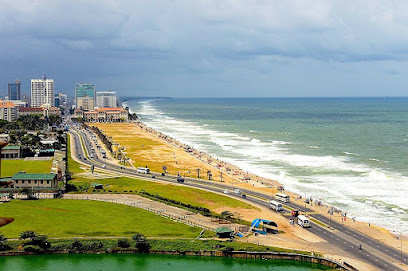
Viharamahadevi Park
Discover the tranquil beauty of Viharamahadevi Park in Colombo, a perfect escape for nature lovers and cultural enthusiasts.
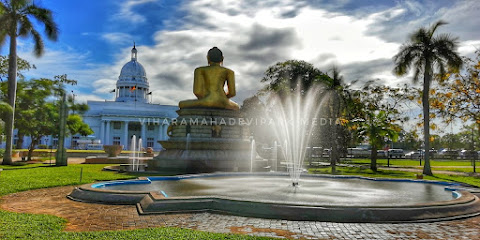
Gangaramaya Temple
Experience the unique blend of history, culture, and serenity at Gangaramaya Temple in Colombo, a must-see Buddhist landmark and tourist attraction.
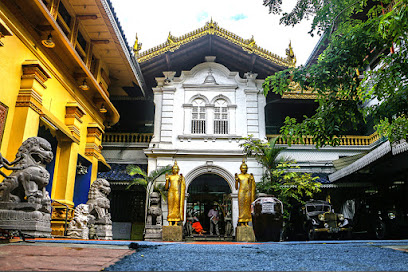
Independence Square
Experience the essence of Sri Lankan heritage at Independence Square, Colombo's premier historical landmark celebrating freedom and unity.
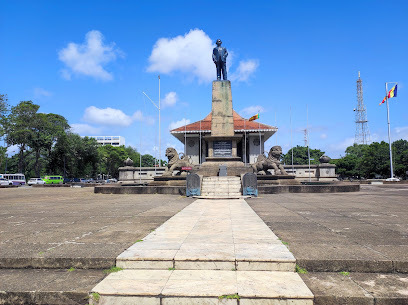
Gangaramaya Park
Experience tranquility in the heart of Colombo at Gangaramaya Park, a perfect blend of nature and culture for every visitor.
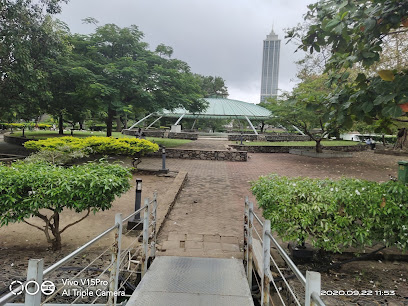
Colombo Galbokka Lighthouse
Uncover the historical significance and breathtaking views at Colombo Galbokka Lighthouse, a cherished landmark of Sri Lanka's maritime past.
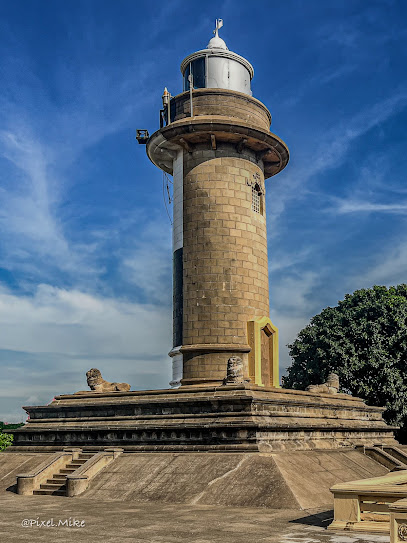
Independence Memorial Museum
Discover the heart of Sri Lankan history at the Independence Memorial Museum, a serene tribute to freedom in the bustling city of Colombo.
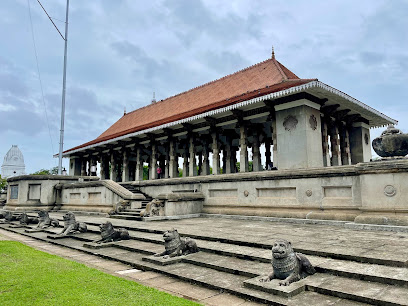
Khan Clock Tower
Discover the historical charm of Khan Clock Tower in Colombo, a stunning landmark that reflects the city's colonial heritage and vibrant culture.
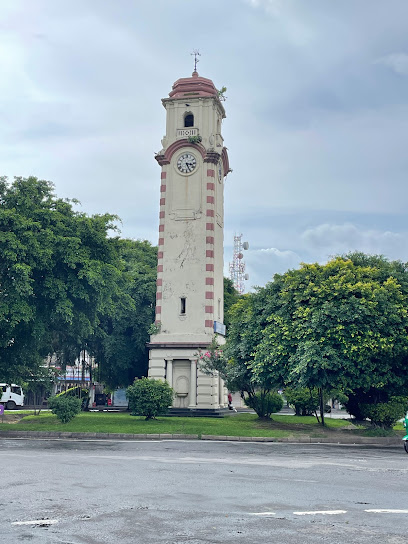
Sivasubramania Swami Kovil
Discover the spiritual beauty of Sivasubramania Swami Kovil, a vibrant Hindu temple in Colombo, blending culture, devotion, and breathtaking architecture.
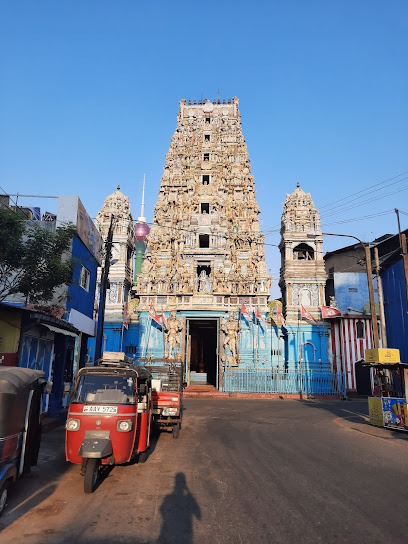
The Old Town Hall Building
Explore the historical significance of The Old Town Hall Building in Colombo, a captivating archaeological museum showcasing Sri Lanka's rich cultural heritage.
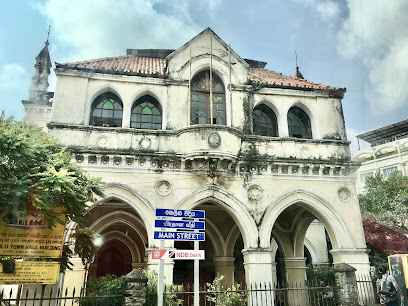
Slvar Memorial Roundabout
Explore the Slvar Memorial Roundabout in Colombo, a historical landmark that embodies Sri Lanka's rich cultural heritage and vibrant urban life.
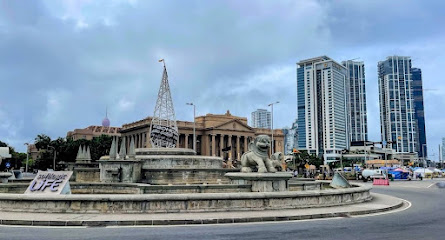
Slave island Boarding
Discover Slave Island Boarding in Colombo, where local bands bring the vibrant Sri Lankan music scene to life in an electrifying atmosphere.
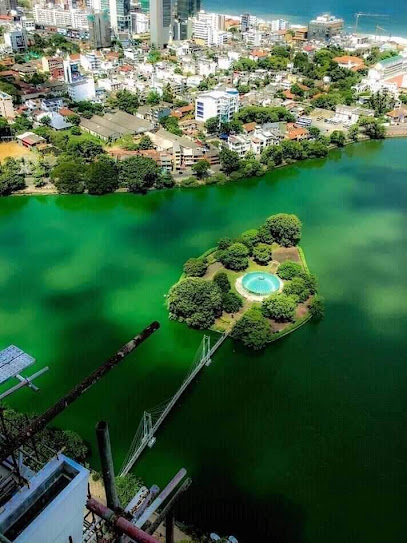
Slave Island Srilanka
Explore the historical richness and vibrant culture of Slave Island, Colombo – a gateway to Sri Lanka's captivating past.
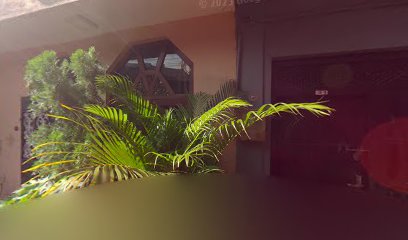
Unmissable attractions to see
Crow Island Beach Park
Explore the serene beauty of Crow Island Beach Park in Colombo, a perfect getaway for nature lovers and families seeking tranquility and recreation.

Colombo Galbokka Lighthouse
Explore the historical Galbokka Lighthouse in Colombo, a majestic landmark with stunning ocean views and rich maritime history.
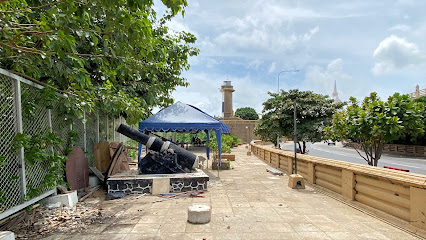
Galle Face Sea
Experience the vibrant culture and stunning sunsets at Galle Face Sea, Colombo's premier coastal attraction for tourists and locals alike.
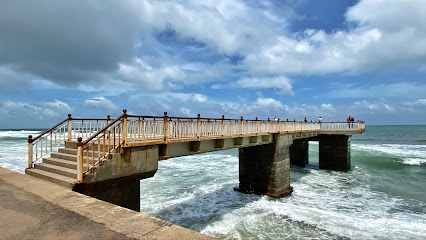
Infant Jesus Shrine and Holy Rosary Church - Colombo | ජේසු බිලිදුන්ගේ රන් දෙවොල සහ ජපමාල දේවමාතා දේවස්ථානය - කොලඹ
Discover the tranquility and beauty of the Infant Jesus Shrine and Holy Rosary Church, a spiritual haven in the heart of Colombo, Sri Lanka.
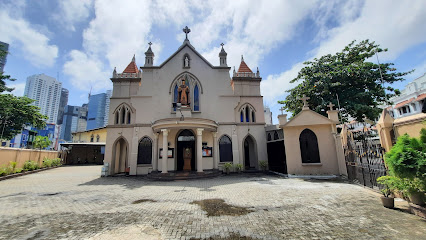
Khan Clock Tower
Experience Colombo's vibrant culture and rich heritage at the iconic Khan Clock Tower, a historical landmark that embodies the city's charm.
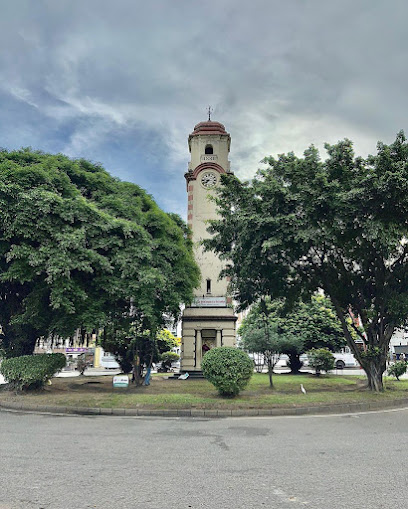
Kayman's Gate - Dutch Bell Tower, කයිමන් දොරකඩ
Explore Kayman's Gate, a historic Dutch Bell Tower in Colombo that encapsulates the city's colonial heritage and vibrant atmosphere.
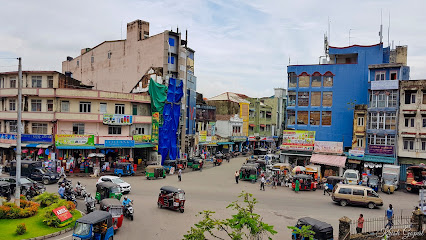
Beira Lake Park
Discover tranquility at Beira Lake Park, an urban retreat in Colombo, where serene waters meet the vibrant pulse of city life.
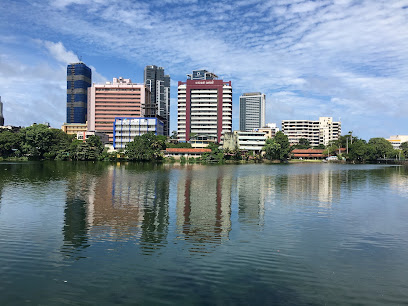
Queen Viharamahadevi Statue
Discover the majestic Queen Viharamahadevi Statue in Colombo, a symbol of peace set amidst lush gardens, offering a serene escape in Sri Lanka's vibrant capital.
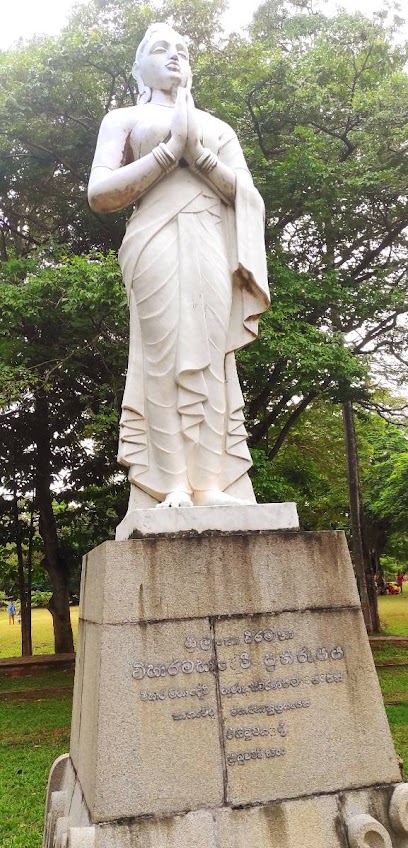
Cinnamon Nature Trails
Explore the lush landscapes and vibrant wildlife at Cinnamon Nature Trails, a serene escape in the heart of Colombo, Sri Lanka's nature-rich paradise.
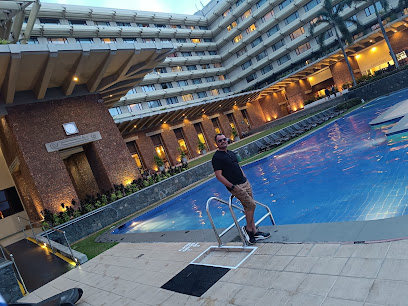
Beira Lake Pelican Nest
Experience tranquility at Beira Lake Pelican Nest, a captivating attraction in Colombo, Sri Lanka, perfect for nature lovers and serene escapes.
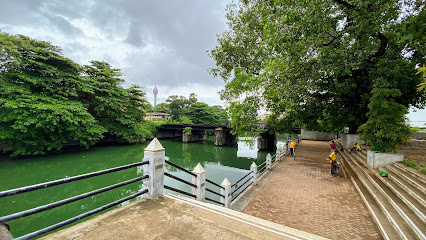
Admiral Anchor
Experience the vibrant atmosphere and local culture at Admiral Anchor, a top tourist attraction in Colombo, Sri Lanka.
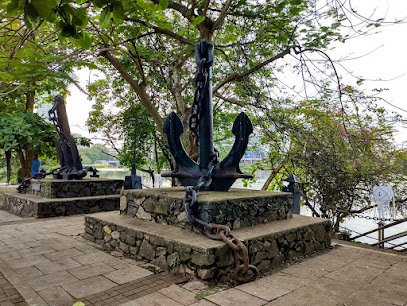
Java land Jumna Mosque Slave Island
Explore the Jumna Mosque in Slave Island, Colombo - a serene sanctuary showcasing stunning Islamic architecture and vibrant local culture.
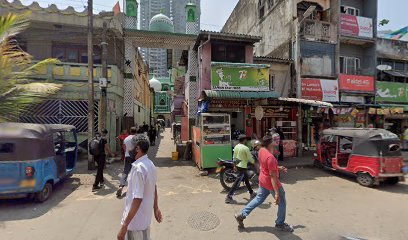
Slave Island Srilanka
Explore the rich cultural heritage of Slave Island, Sri Lanka, a historical landmark reflecting the island's colonial past and vibrant local life.
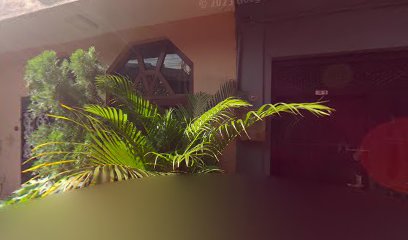
Essential places to dine
Fazly's Halal Refreshment
Discover the flavors of halal fast food at Fazly's Halal Refreshment in Colombo – where taste meets tradition!
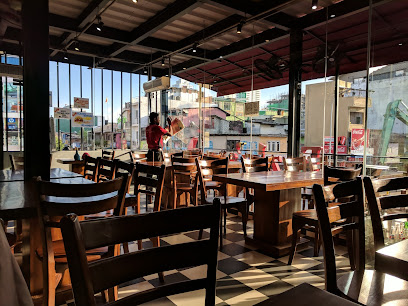
A-One Cafe
Discover the flavors of Sri Lanka at A-One Cafe in Colombo - where local cuisine meets warm hospitality.
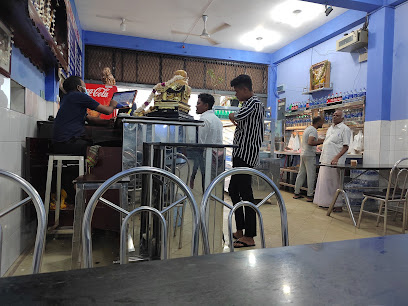
SAMAL RESTAURANT PVT LTD
Experience the vibrant flavors of Western cuisine at Samal Restaurant Pvt Ltd in Colombo, where great food meets exceptional service.
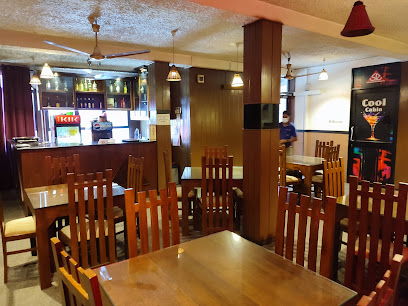
The Cue
Discover authentic Sri Lankan cuisine at The Cue in Colombo - a delightful dining experience filled with local flavors and warm hospitality.
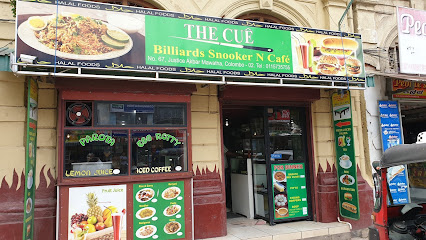
New Paris Hotel
Experience authentic Sri Lankan cuisine at New Paris Hotel in Colombo - a delightful culinary journey awaits you.
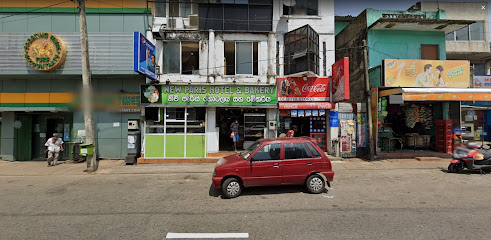
Sahan Food
Discover authentic Chinese cuisine at Sahan Food in Colombo – a culinary haven for food lovers seeking rich flavors and delightful experiences.
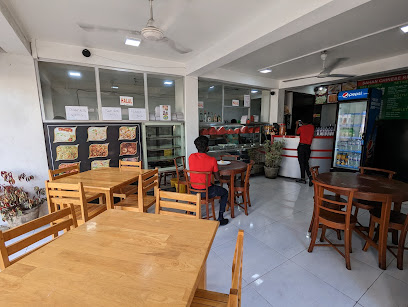
Gaziantep Kebap Beyran Salonu
Experience the essence of Turkey at Gaziantep Kebap Beyran Salonu in Colombo – where every dish tells a story.
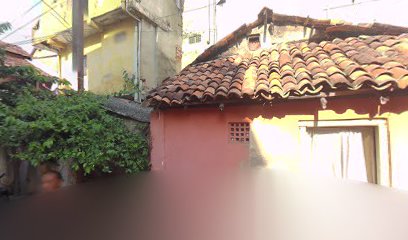
Devly's Catering
Experience the authentic flavors of Sri Lanka at Devly's Catering in Colombo – a must-visit culinary destination for all food lovers.
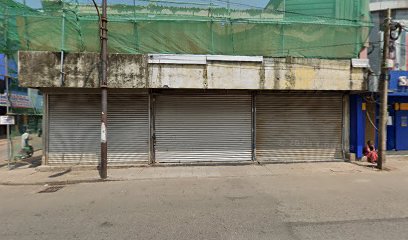
Boolan Fast Food
Experience a unique blend of local and international flavors at Boolan Fast Food in Colombo - perfect for tourists craving delicious quick bites.

Bilal Cool Spot
Discover authentic Sri Lankan cuisine at Bilal Cool Spot in Colombo - a must-visit restaurant for tourists craving local flavors.
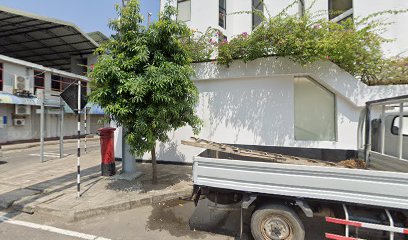
Markets, malls and hidden boutiques
M. M. Noorbhoy & Co (Pvt) Ltd
Explore M. M. Noorbhoy & Co in Colombo for top-notch hardware and home improvement solutions, catering to every DIY enthusiast's needs.
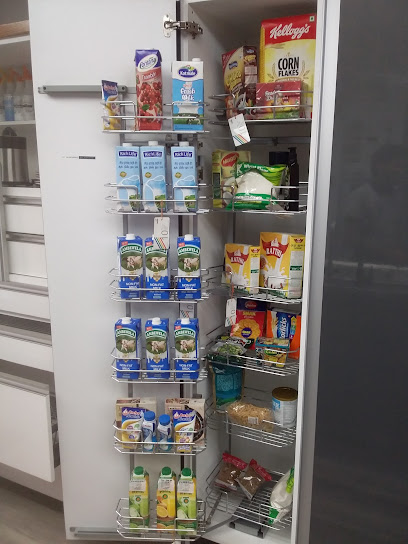
Love Gift Lanka
Explore Love Gift Lanka, a charming gift shop offering unique treasures and artisanal crafts perfect for every occasion.
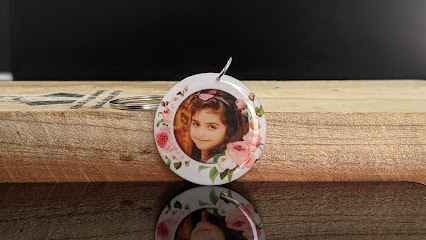
Caravan Fresh - The Cake & Pastry Shop
Discover the sweet side of Colombo at Caravan Fresh - a bakery paradise for cake and coffee lovers.
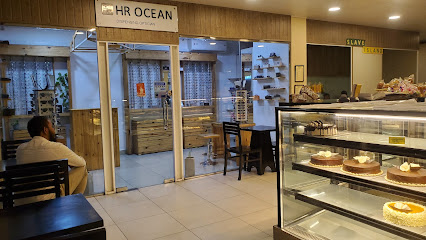
VISHWA SPICE AND AYURVEDA HERBAL SHOP
Unveil the secrets of natural healing and authentic spices at Vishwa Spice and Ayurveda Herbal Shop in Colombo, Sri Lanka.
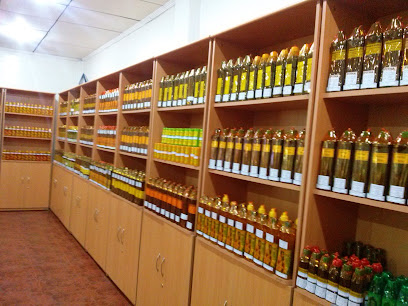
Hobby Fishing tackles
Explore a vast selection of premium fishing gear at Hobby Fishing Tackles, your ultimate destination for fishing in Colombo, Sri Lanka.
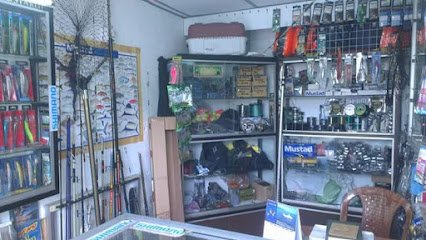
Slave Island Market
Experience the vibrant atmosphere of Slave Island Market in Colombo, where fresh produce and local crafts come together for an authentic Sri Lankan shopping experience.
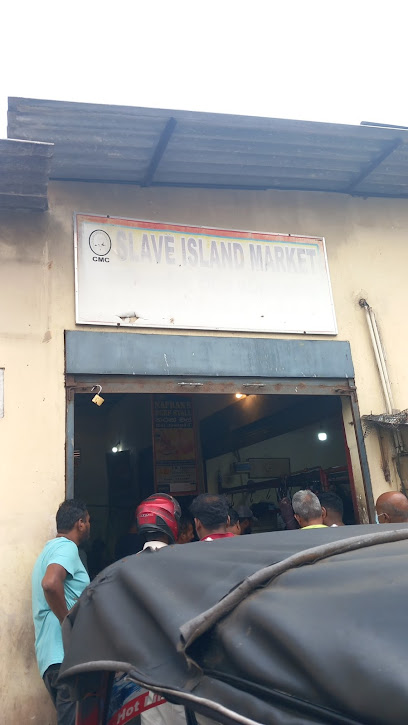
Zimba Exotic
Experience the joy of pet companionship at Zimba Exotic, Colombo's premier pet store with a wide variety of pets and supplies.

Naina Mohamed And Son's
Explore the vibrant offerings of Naina Mohamed And Son's, a grocery store in Colombo that celebrates local and international culinary delights.
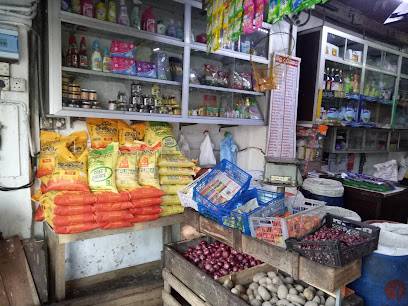
armynavystoressrilanka
Explore a diverse range of products at Army Navy Stores, Colombo's premier shopping destination for tourists and locals alike.
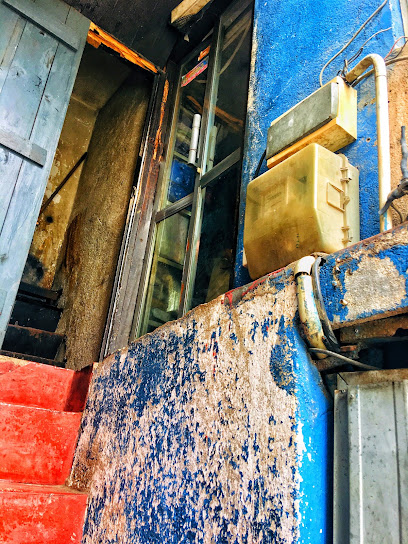
FAIFA
Explore FAIFA, the ultimate watch store blending luxury timepieces with fashion, offering a unique shopping experience for every style.
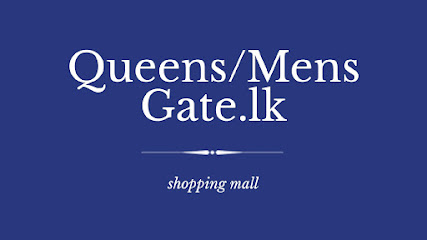
Essential bars & hidden hideouts
In...on the Green
Discover the vibrant 'In...on the Green' bar at Galle Face Hotel, where live music meets stunning views and a delightful culinary experience.
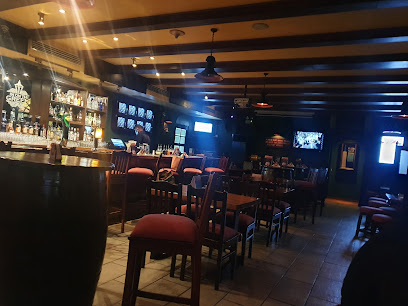
The REPUBLK
Discover vibrant nightlife at The REPUBLK in Colombo, where culinary delights and lively entertainment meet in an inviting atmosphere.
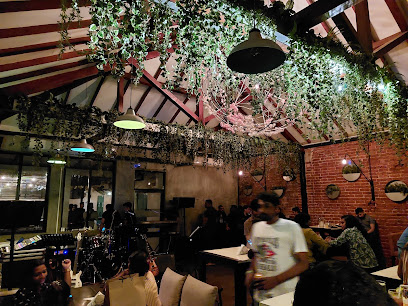
The Breeze Bar
Experience the perfect blend of relaxation and sophistication at The Breeze Bar in Colombo, where stunning ocean views meet exquisite cocktails and gourmet cuisine.
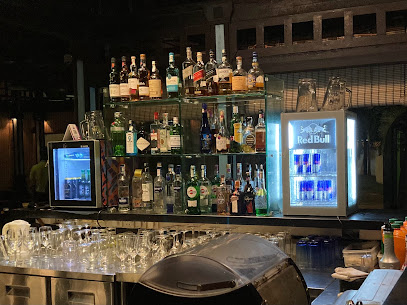
Curve Bar
Discover the vibrant nightlife at Curve Bar in Colombo, where cocktails meet camaraderie in a stylish setting.
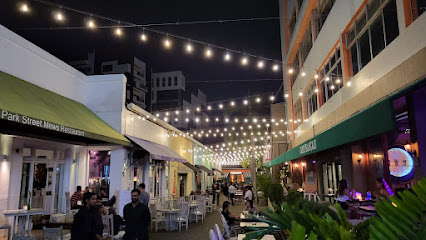
Darley Road Pub & Restaurant
Discover the vibrant essence of Colombo at Darley Road Pub & Restaurant, where flavorful dishes and a lively atmosphere await.
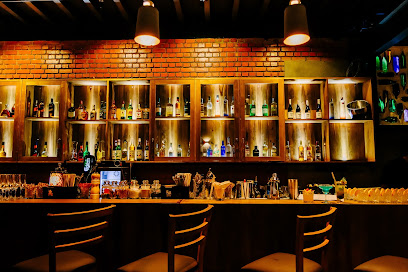
SAMAL RESTAURANT PVT LTD
Experience the vibrant taste of Colombo at Samal Restaurant Pvt Ltd, where Western cuisine meets local hospitality in a lively bar and grill setting.
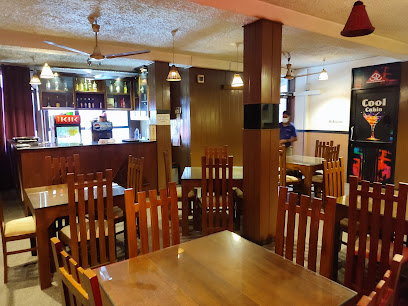
The Cabinet Bar & Lounge
Discover the vibrant nightlife of Colombo at The Cabinet Bar & Lounge, where creative cocktails and a cozy atmosphere await.
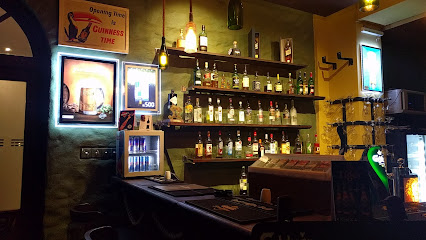
Coache's Club
Discover the vibrant nightlife of Colombo at Coache's Club, where great drinks and a lively atmosphere await every visitor.
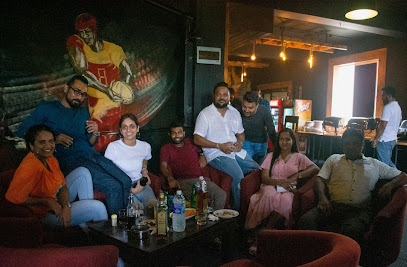
Pool Bar
Discover the ultimate relaxation at Colombo's Pool Bar, where refreshing cocktails and a serene ambiance await every tourist.
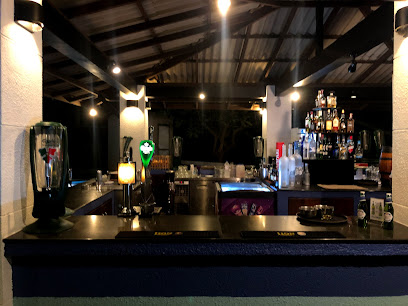
Skky Bar Colombo
Experience breathtaking views and vibrant nightlife at Skky Bar in Colombo, where exquisite cocktails meet stunning cityscapes.
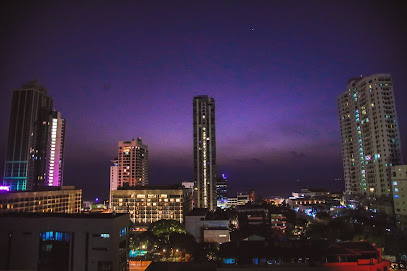
Local Phrases
-
- Helloහායි
[haayi] - Goodbyeසුරං
[suran] - Yesඔව්
[ow] - Noනෑ
[nae] - Please/You're welcomeකරන්න
[karanna] - Thank youආයුබෝවන්
[ayubowan] - Excuse me/Sorryකාටද?
[kaatda] - How are you?ඔය කොහද?
[oyaa kohda] - Fine. And you?තෝරා. ඔය?
[thora. oya?] - Do you speak English?ඔය ඉංග්රීසි කතා කරයිද?
[oya ingreesi katha karayida?] - I don't understandමම අතකොත් දැන්නෙයි
[mama athakoth danneyei]
- Helloහායි
-
- I'd like to see the menu, pleaseමෙන්රඩ් එක බලන්න
[menuradha eka balanna] - I don't eat meatමම වත්මැල කරන්නෙයි
[mama wathmala karannei] - Cheers!සුභ උන්නේවා
[suba unneva] - I would like to pay, pleaseගෙදරට කියන්නෙයි
[gedarata kiyannei]
- I'd like to see the menu, pleaseමෙන්රඩ් එක බලන්න
-
- Help!උක්ක ඉක්ක
[ukka ikka] - Go away!යන්න
[yanna] - Call the Police!පොලිස් දාන්න
[polis dannaein] - Call a doctor!වෛර දාන්න
[vaira dannaein] - I'm lostමම අකිල්
[mama akil] - I'm illමම අස්වල්
[mama aswal]
- Help!උක්ක ඉක්ක
-
- I'd like to buy...මෙන්ඩ් කරන්නේද?
[menadha karanneda?] - I'm just lookingමම දැන්නෙයි
[mama dannayi] - How much is it?එයට කොණ්ද?
[eyata kondha?] - That's too expensiveඑය ඉතායි
[eya ithayi] - Can you lower the price?එය කහල් කළ හැකිද?
[eya kahal kala haeidha?]
- I'd like to buy...මෙන්ඩ් කරන්නේද?
-
- What time is it?වේලාව කොරේද?
[welawa koreda?] - It's one o'clockඑකට
[ekata] - Half past (10)දහයි
[dahayi] - Morningඋදේවල
[udewala] - Afternoonපසළ
[pasala] - Eveningවැනි
[wani] - Yesterdayඊයේ
[iyae] - Todayඅද
[ada] - Tomorrowහෙට
[heta] - 1එක
[eka] - 2දෙක
[deka] - 3තුන
[thuna] - 4හතලි
[hathali] - 5පහ
[paha] - 6හය
[haya] - 7හත
[hatha] - 8අට
[ata] - 9නත
[nata] - 10දහය
[dahaya]
- What time is it?වේලාව කොරේද?
-
- Where's a/the...?එස්ත් එකක් වෙලාවට?
[est ekak velavata?] - What's the address?ලිපිනය කුමාටද?
[lipinaya kumadha?] - Can you show me (on the map)?මාපට ලේබිකයට පෙන්නෙද?
[mapata lebikayata penneida?] - When's the next (bus)?ඊළඟ කුමාටද?
[iilaga kumadha?] - A ticket (to ....)ටිකට් (.... වෙනස්)
[tikat (... venas)]
- Where's a/the...?එස්ත් එකක් වෙලාවට?
History of Slave Island
-
Slave Island, known locally as 'Kola Oya', has its origins in the colonial era when it served as a small island in the Beira Lake. The area was named after the slave trade that was prevalent during the Portuguese and Dutch colonial periods in the 16th and 17th centuries. The name reflects the dark history of slavery in Sri Lanka, where slaves were brought from Africa and other regions to work on plantations and in households.
-
During the 17th century, the Dutch established control over Colombo, and Slave Island became a significant point for trade and commerce. The British took over in the 19th century, further developing the area with infrastructure that included roads and railways, which facilitated the movement of goods and people. The island became known for its diverse community, including Tamil, Muslim, and Sinhalese populations.
-
Slave Island has evolved into a vibrant cultural melting pot. The neighborhood is home to various religious sites, including temples, mosques, and churches, showcasing the rich tapestry of beliefs and traditions. The presence of the historic 'Jami Ul-Afar Mosque', built in the 19th century, and the 'Sri Kottahena Vigneswara Temple' reflects the coexistence of different cultural and religious communities.
-
In the late 20th century, Slave Island underwent significant urban development as Colombo expanded. The area saw the rise of new residential buildings and commercial establishments. This transformation brought both challenges and opportunities, as long-time residents faced displacement while new populations moved in, adding to the diversity of the neighborhood.
-
In recent years, Slave Island has been part of a broader trend of gentrification in Colombo, with increased investment in infrastructure and housing. The area has attracted young professionals and artists, leading to a revival of cultural activities and community engagement. This shift has sparked discussions about preserving the neighborhood's historical identity while accommodating modernization.
Slave Island Essentials
-
Slave Island is easily accessible from various neighborhoods in Colombo. From Colombo Fort, you can take a tuk-tuk or a taxi, which takes about 10-15 minutes. Alternatively, you can use the Sri Lanka Railways; the nearest train station is Colombo Fort Station, from where you can catch a train to Slave Island Station, which is just a short walk from the neighborhood.
-
Getting around Slave Island can be done via several modes of transport. The area is walkable, making it easy to explore on foot. For longer distances, local buses and tuk-tuks are available. The Colombo Light Rail Transit (LRT) system is also under development, which will further improve connectivity in and around Slave Island. Bicycles can be rented from local shops, providing an eco-friendly way to explore the area.
-
Slave Island is generally safe for tourists, but it is advisable to remain vigilant, especially in crowded areas. Avoid walking alone late at night in poorly lit streets. Certain areas close to the canal can be less safe; always be cautious and aware of your surroundings, and avoid displaying valuable items. Petty theft can occur, so keep your belongings secure.
-
In case of an emergency, dial 119 for police assistance or 110 for fire services. For medical emergencies, the closest hospital is the Colombo National Hospital, which is well-equipped. Always have travel insurance that covers medical emergencies. Pharmacies are available for minor health issues, and many are open late.
-
Fashion: Do dress modestly, particularly when visiting religious sites. Avoid overly casual attire. Religion: Do respect local customs, and when visiting temples, ensure to cover your shoulders and knees. Public Transport: Do be courteous and offer your seat to elderly passengers; don't engage in loud conversations. Greetings: Do greet locals with a smile and a nod; don't use overly formal gestures. Eating & Drinking: Do try local foods from street vendors; don’t consume food or drink in religious sites.
-
To experience Slave Island like a local, visit the nearby markets where fresh produce and local snacks are available. Engage with the friendly vendors for tips on the best local dishes. Explore the area’s colonial architecture and visit the historic temples. Don’t miss the chance to learn about local history by conversing with long-time residents, many of whom are eager to share their stories.
Trending Landmarks in Slave Island
Nearby Cities to Slave Island
-
Things To Do in Negombo
-
Things To Do in Bentota
-
Things To Do in Hikkaduwa
-
Things To Do in Kandy
-
Things To Do in Nuwara Eliya
-
Things To Do in Galle
-
Things To Do in Unawatuna
-
Things To Do in Mirissa
-
Things To Do in Ella
-
Things To Do in Matara
-
Things To Do in Sigiriya
-
Things To Do in Anuradhapura
-
Things To Do in Polonnaruwa
-
Things To Do in Trincomalee
-
Things To Do in Kanyakumari











